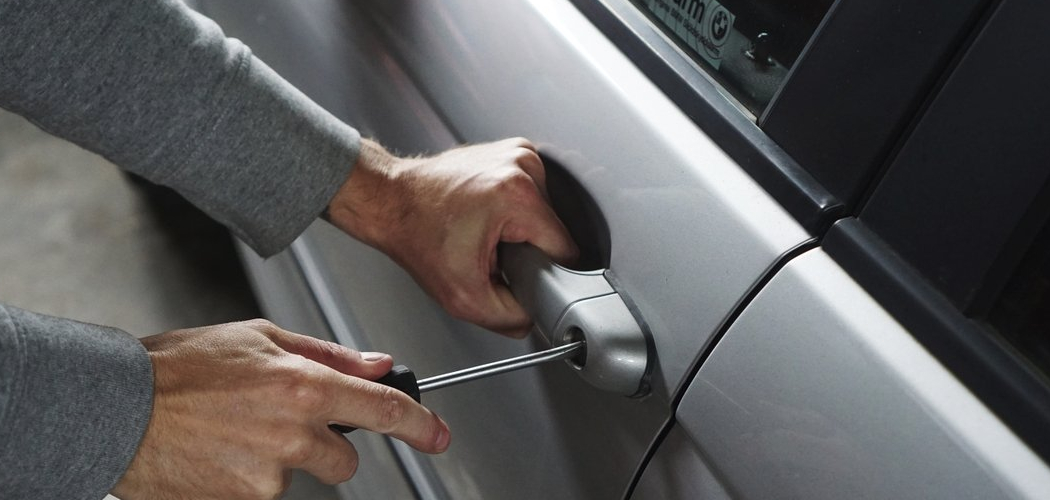Getting locked out of a car is a situation that many people encounter at least once in their lives. Whether it’s due to misplaced keys, a malfunctioning lock, or accidentally leaving the keys inside, this common problem can cause frustration and disrupt plans. Knowing how to unlock car without keys is an essential skill that can save time, reduce stress, and prevent costly damage to the vehicle.
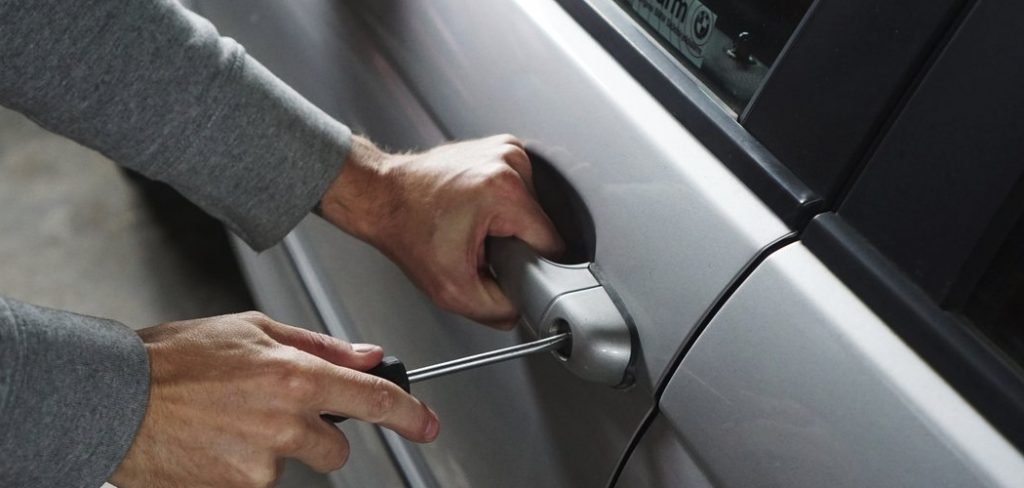
This article aims to guide readers through safe, legal, and effective methods for regaining access to their car without causing harm. By exploring various techniques and strategies, readers can equip themselves with practical solutions to handle such emergencies and avoid unnecessary complications in the future.
Understanding Car Lock Systems
Types of Car Locks
Car lock systems have evolved significantly, transitioning from traditional mechanical locks to advanced electronic keyless entry systems. Conventional mechanical locks require a physical key to turn, engage, or disengage the locking mechanism manually.
These locks rely on a straightforward mechanical process, making them relatively simple yet robust. Conversely, electronic keyless entry systems utilize advanced technology, such as transponders or key fobs, allowing drivers to unlock their cars remotely with the push of a button. Some modern vehicles even feature smart key systems, enabling keyless entry through proximity sensors.
How Locks Work
The basic mechanism of locks varies between traditional and keyless systems. Mechanical locks function through a series of pins and tumblers that align when the correct key is inserted, allowing the lock to turn. On the other hand, electronic keyless systems use sophisticated radio frequency signals transmitted by the key fob or smart key to communicate with the car’s internal locking system. Upon receiving the correct signal, the system automatically unlocks the doors.
Challenges of Unlocking Without Keys
Unlocking a car without keys poses challenges that depend on the specific locking system and the vehicle’s make or model. Mechanical locks, while simpler in construction, may require tools like a slim jim or lock-picking kit. Keyless entry systems, however, can be much more complex due to encryption and signal-based technology, often necessitating specialized equipment or professional assistance, presenting additional hurdles for drivers dealing with a lockout situation.
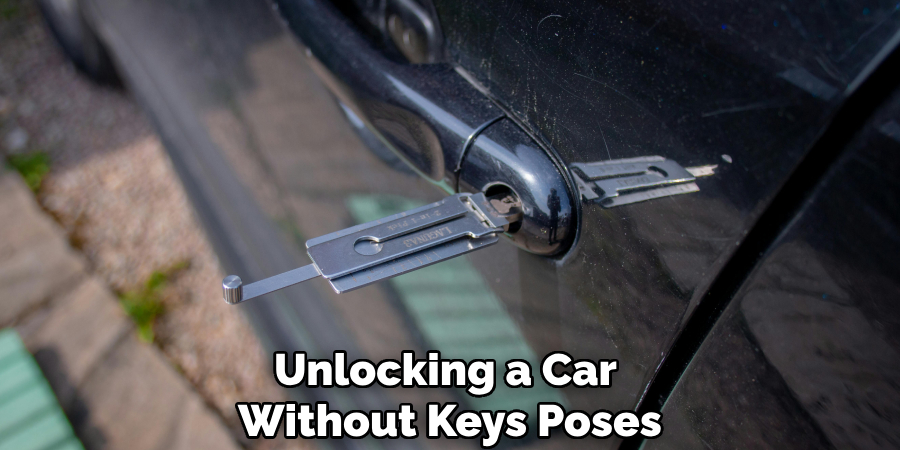
Precautions Before Attempting to Unlock
Before attempting to unlock a vehicle without keys, it is essential to take necessary precautions to ensure safety and legality.
Legal Considerations
The first and most important step is to confirm you are authorized to unlock the vehicle. If the car belongs to you, keep proof of ownership, such as a registration or insurance card, readily available to avoid any misunderstandings. If the vehicle is not yours, ensure you have explicit permission from the owner and be prepared to provide documentation if required. Understanding and following local laws around vehicle entry is also crucial to avoid potential legal repercussions.
Avoiding Damage
Attempting to unlock a vehicle without the right methods or tools can lead to costly damage. For instance, forcing a door open could harm the door seals or bend the frame, while breaking a window is both dangerous and unnecessary if other solutions are available. Take time to evaluate non-invasive techniques to minimize the risk of permanent damage to the car.
Gathering Necessary Tools
Common tools for unlocking vehicles include Slim Jims, wedge tools, or lock-picking kits. Calling a professional locksmith or roadside assistance service is often the best option if such tools are unavailable. Always follow safety measures, like wearing gloves and ensuring proper lighting, to safely and effectively assist with the unlocking process without harm.
How to Unlock Car Without Keys: Methods to Unlock a Car Without Keys
Using a Slim Jim or Lockout Tool
A slim jim or lockout tool is a common choice for unlocking car doors. To use it properly without causing damage, slide the tool between the weather stripping and the window on the door of the locked vehicle. Aim to hook the retractor rod or latch that unlocks the door. It’s essential to have a steady hand and know the internal configuration of the door mechanism to avoid damaging electrical components or wires. Practice caution, as improper use can lead to costly repairs.
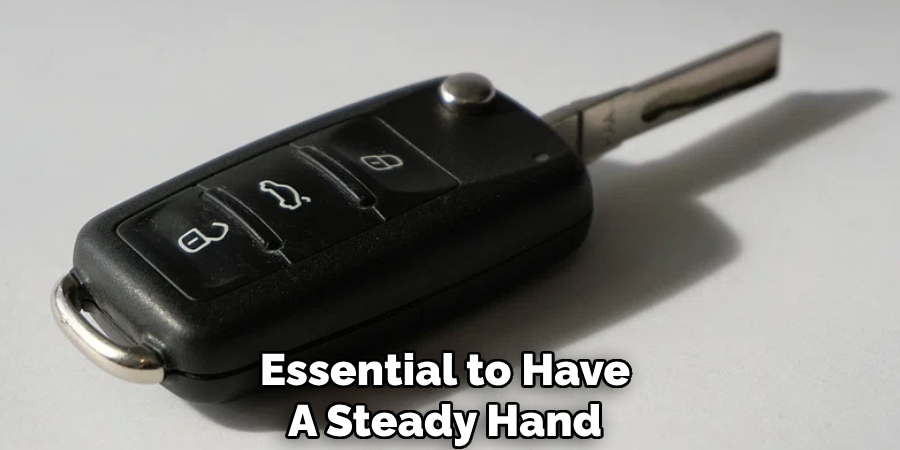
Using a Coat Hanger or Wire
For older car models with upright locks, a coat hanger or sturdy wire can serve as a makeshift unlocking tool. Straighten the wire and bend a small hook at the end. Slide it between the weather stripping and the window, then fish for the locking mechanism. Once you’ve hooked the lock, carefully pull it up to unlock the door. This method requires patience and precision and is typically effective on less complex locking systems found in older vehicles.
Using the Wedge and Rod Method
The wedge and rod method creates space to insert tools and access the locking mechanism. First, gently insert a wedge—such as an inflatable pump wedge or a plastic door stop—between the car door and the frame to create a small gap. Once the gap is wide enough, use a rod or similar tool to push or pull the lock mechanism or door handle. Be gentle to avoid damaging the door or frame during this process.
Using a Spare Key or Key Fob App
If you have a spare key or the car supports key fob apps, these can be the most straightforward solutions. Spare keys stored at home or with a trusted person can save a lot of hassle. For vehicles with modern technology, key fob apps allow you to unlock the car remotely using your smartphone. Learn and test these features in advance to ensure they work seamlessly in emergencies.
Calling Roadside Assistance or a Locksmith
When other methods fail or the risk of damage is high, calling professional help is the safest option. Roadside assistance services often have specialists equipped with tools to unlock your car efficiently and without damage. Similarly, locksmiths are trained to handle various lock mechanisms and can provide a prompt solution. Relying on professionals ensures no added harm to your vehicle and resolves the situation quickly.
Using Technology to Unlock Cars
Modern technology has revolutionized unlocking cars, making it more convenient and user-friendly. Many car manufacturers now provide keyless entry options through smartphone apps. These apps often allow owners to lock and unlock their vehicles remotely, start the engine, or even locate their car in a crowded parking lot. Features like these are particularly helpful in emergencies, offering a seamless and easy solution.
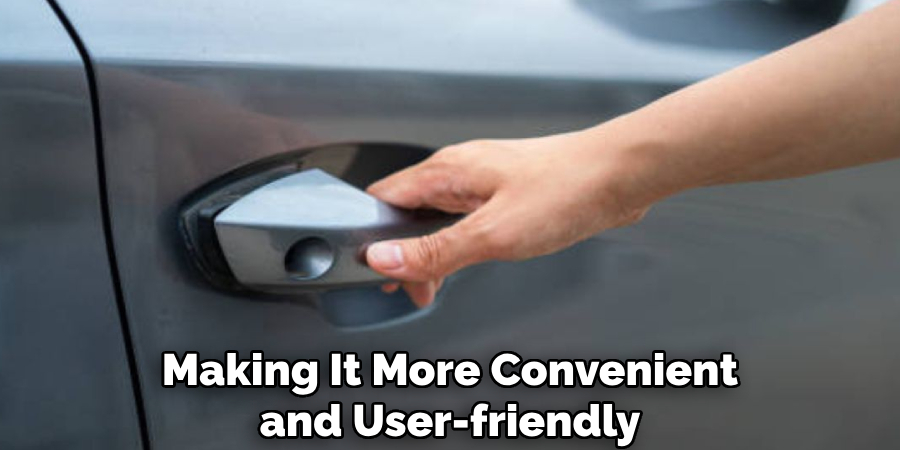
Services such as OnStar or similar systems go a step further by enabling remote car unlocking assistance. These services allow vehicle owners to contact customer support and have their car unlocked remotely. The system typically works through an active subscription and requires verification of the owner’s identity. This eliminates the need to carry a traditional key and provides peace of mind in accidental lockouts.
However, technology-based solutions come with certain limitations. Not all vehicles, particularly older models, are compatible with these advanced features. Additionally, many of these services require an active subscription, which can be an ongoing expense. There are also risks to consider, such as potential vulnerabilities in cybersecurity. While technology offers convenience, understanding its restrictions and ensuring proper safeguards is crucial for making the most of these modern tools.
When to Avoid DIY Methods
Performing car repairs or enhancing your vehicle’s functionality through DIY methods can be appealing, but there are specific scenarios where they should be avoided.
Complex Locking Systems
Modern vehicles often come with sophisticated locking mechanisms and security systems requiring specialized professional tools. Attempting to fix or modify these systems without proper expertise can render them inoperable or compromise their effectiveness.
Potential for Damage
DIY attempts, especially without the correct knowledge or tools, can result in unintentional damage. Missteps can lead to costly repairs, such as damaging sensitive electronic components or causing mechanical issues. It is best to leave complex repairs to professionals to avoid unnecessary expenses.
Legal and Safety Risks
Certain DIY methods may inadvertently breach legal boundaries or involve unsafe practices that could lead to injury. It’s crucial to avoid actions that violate local laws or pose dangers to yourself and others. Always prioritize safety and compliance over shortcuts.
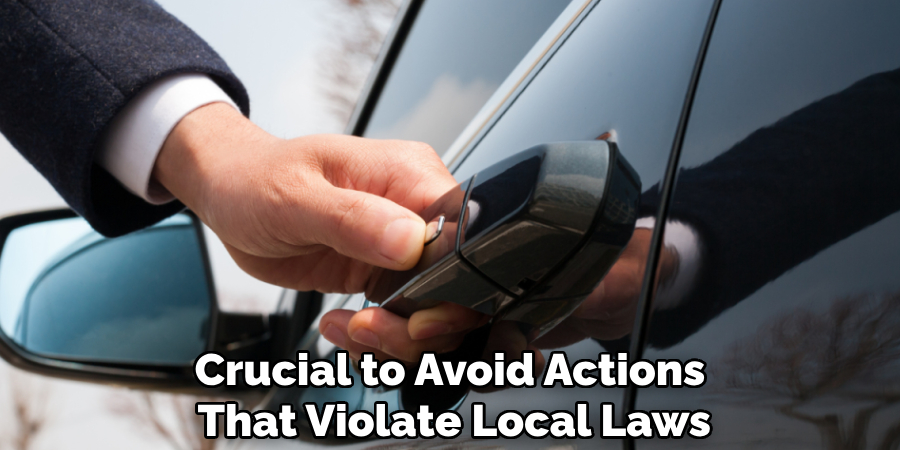
Tips for Preventing Future Lockouts
Spare Keys and Key Storage
One of the simplest ways to avoid future lockouts is by keeping spare keys strategically accessible. Consider giving a trusted friend or family member a copy of your spare key. Alternatively, invest in a weatherproof key lockbox securely mounted in a discreet but accessible location. Avoid hiding keys under mats or in common places, as these are easy for intruders to exploit.
Using Keyless Entry Systems Effectively
Keyless entry systems, whether smartphone-based or remote key fobs, provide a convenient lockout solution. Ensure your smartphone or remote fob is always charged and within reach when needed. Regularly check the system for firmware updates and functionality to prevent technical malfunctions. In case of system failure, it’s also helpful to enable backup security features, like temporary access codes or physical keys.
Routine Maintenance of Locks and Keys
Proper lock and key maintenance prevents unexpected issues such as lock jams or broken keys. Periodically clean and lubricate locks with graphite—or silicone-based products to ensure smooth operation. Inspect your keys regularly for wear and replace them if you notice cracks or bending to avoid breakages. Simple upkeep can increase the longevity and reliability of your locks and keys.
Emergency Situations and Safety Considerations
When to Call Emergency Services
It is crucial to contact emergency services when immediate assistance is required, such as when being locked inside a car or when children or pets are trapped. These scenarios can escalate quickly, especially in extreme weather conditions, and professional help can prevent further risks.
First Aid and Immediate Actions
While waiting for assistance, ensure the immediate safety of everyone involved. If trapped individuals appear distressed, try communicating with them to provide comfort. Stay nearby and monitor the situation closely. Avoid attempting forceful entry unless it is necessary for safety, as this could cause injury or additional damage.
Avoiding Panic
Remaining calm during an emergency is essential for effective decision-making. Assess the situation and consider the available options. A clear head can help you focus on immediate needs and ensure a safer resolution.
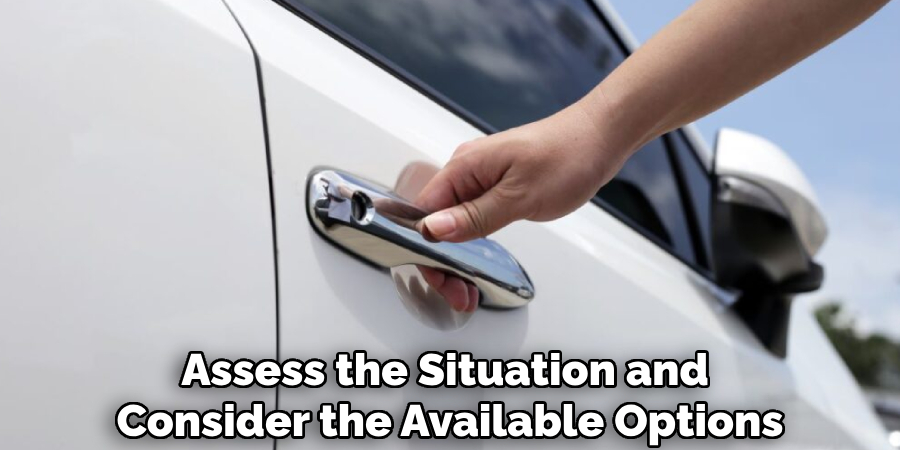
Conclusion
Learning how to unlock car without keys safely and effectively requires a focus on legal and damage-free solutions. Start by trying simple methods, such as checking unlocked doors or using tools like a shoelace or wedge and rod, ensuring you avoid causing harm to the vehicle. When in doubt, contacting professional help is always a reliable option. Consider carrying a spare key or investing in a keyless entry system to prevent future lockouts. By following these tips and remaining prepared, you can confidently handle such situations while protecting your vehicle from unnecessary damage.

